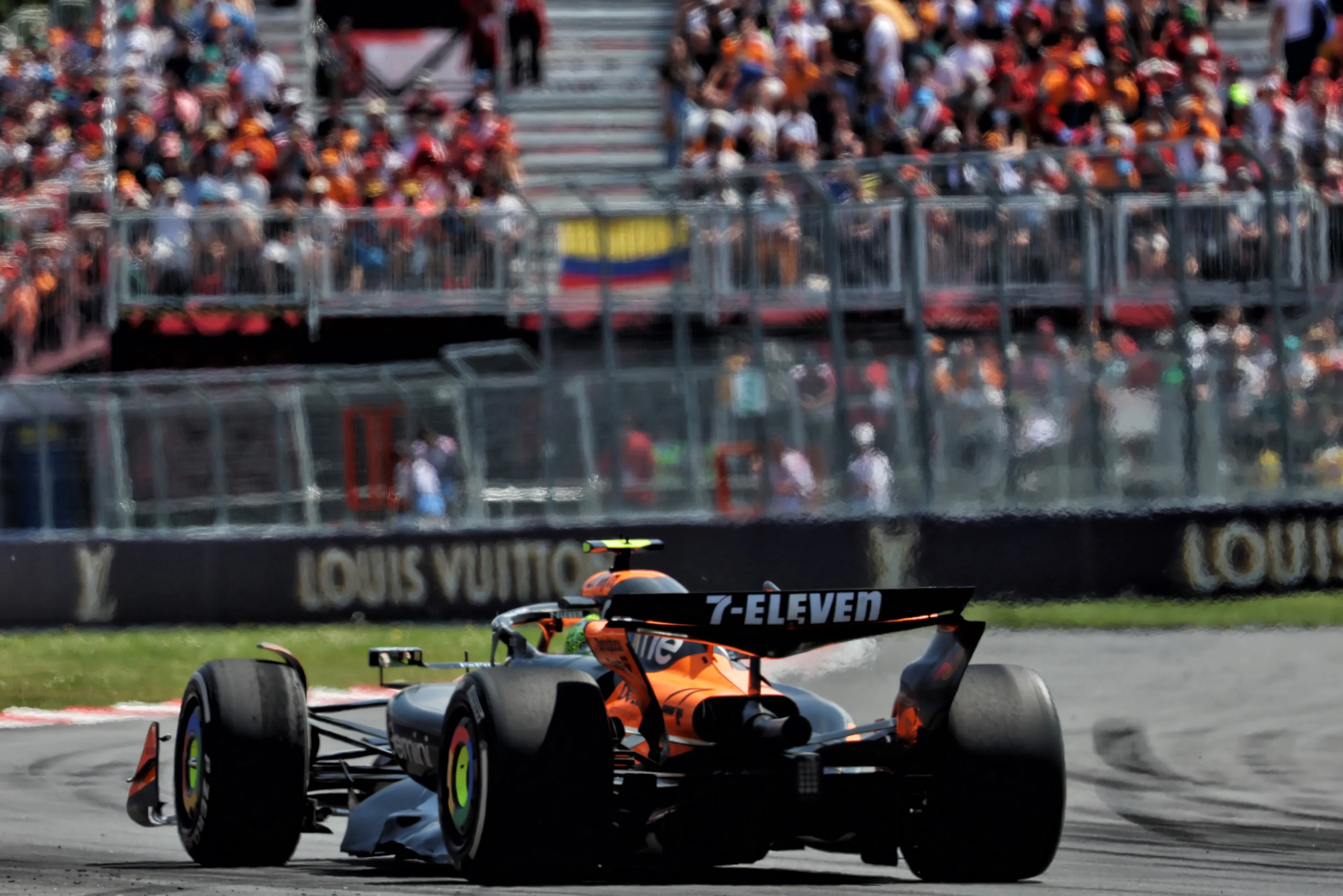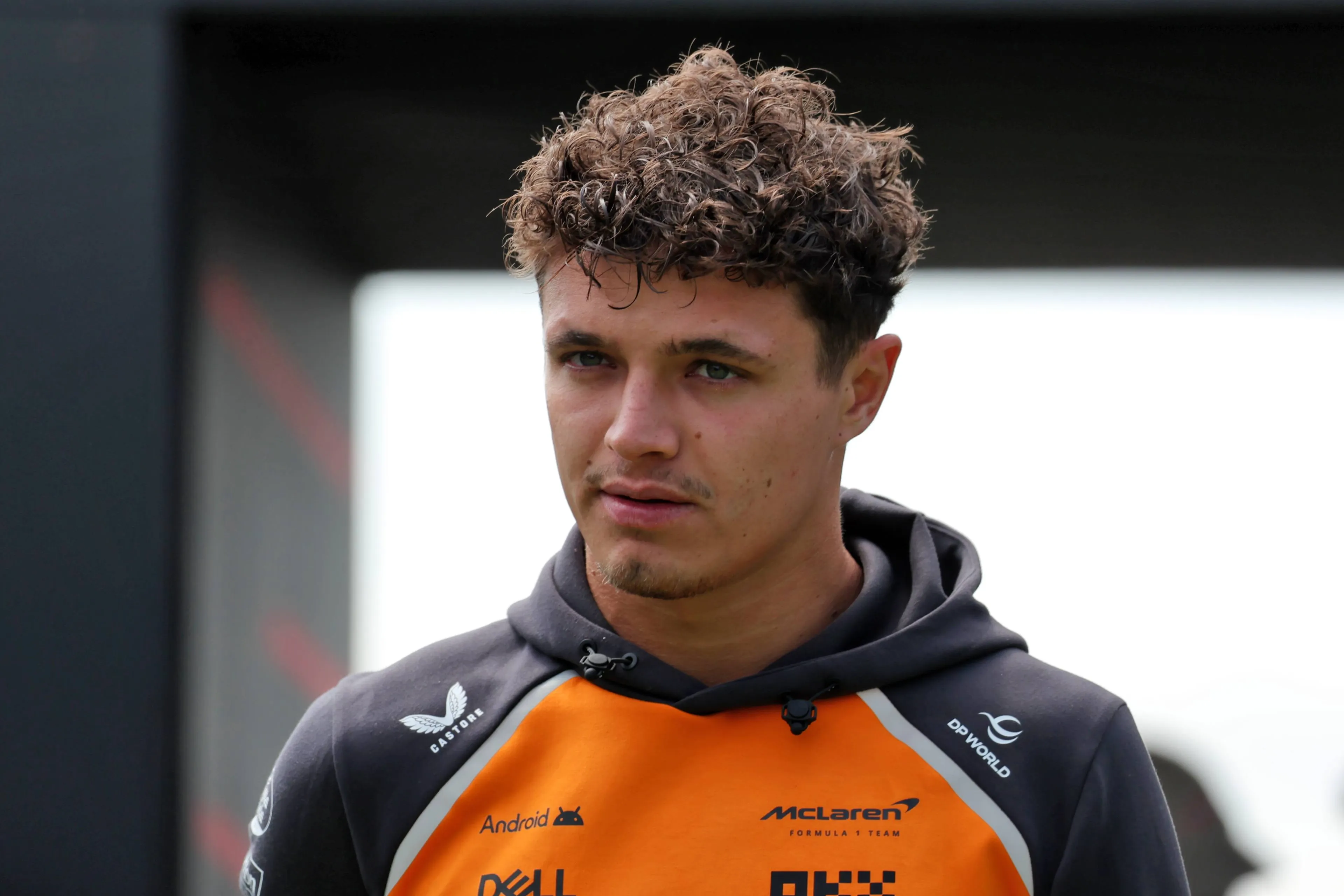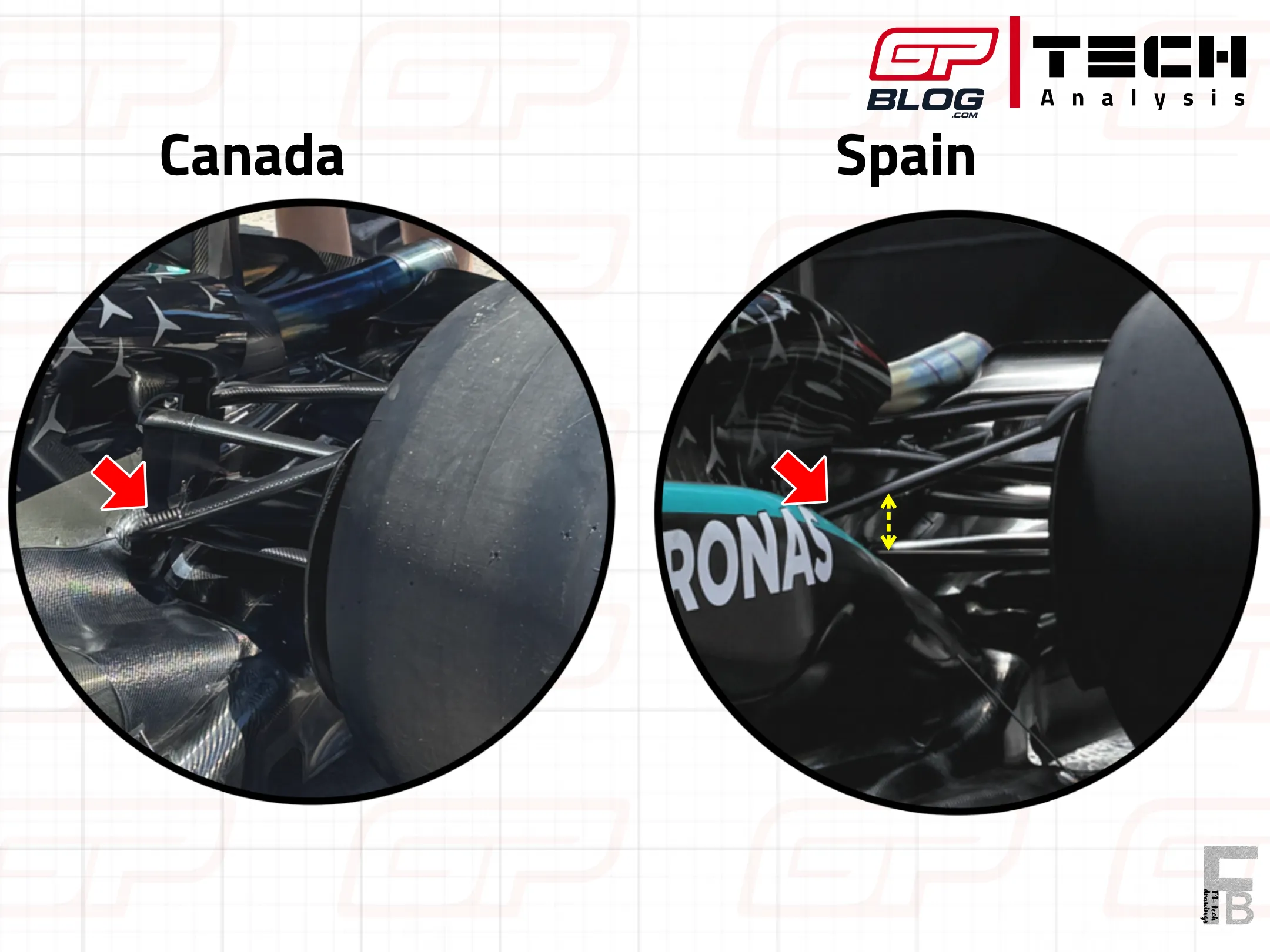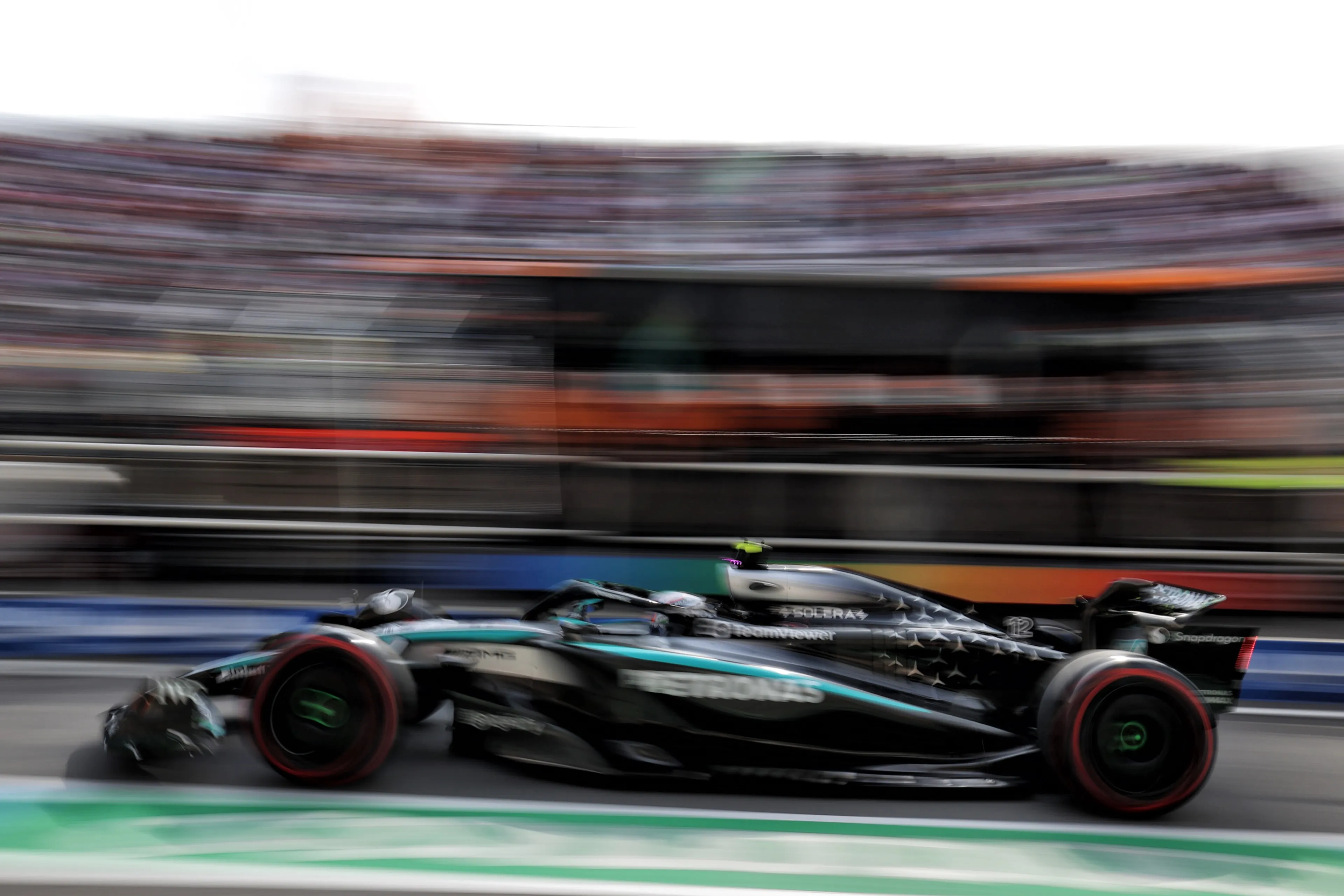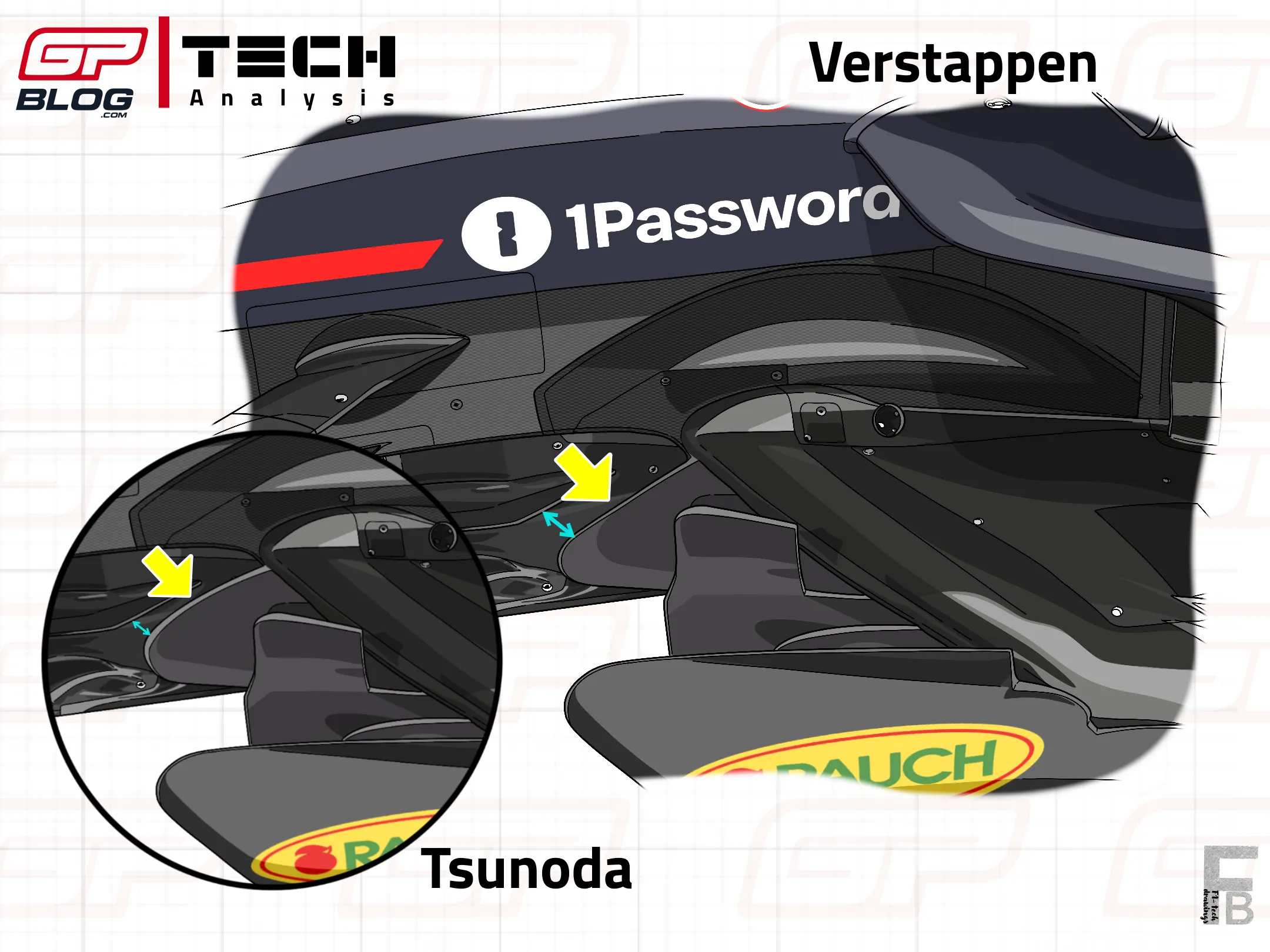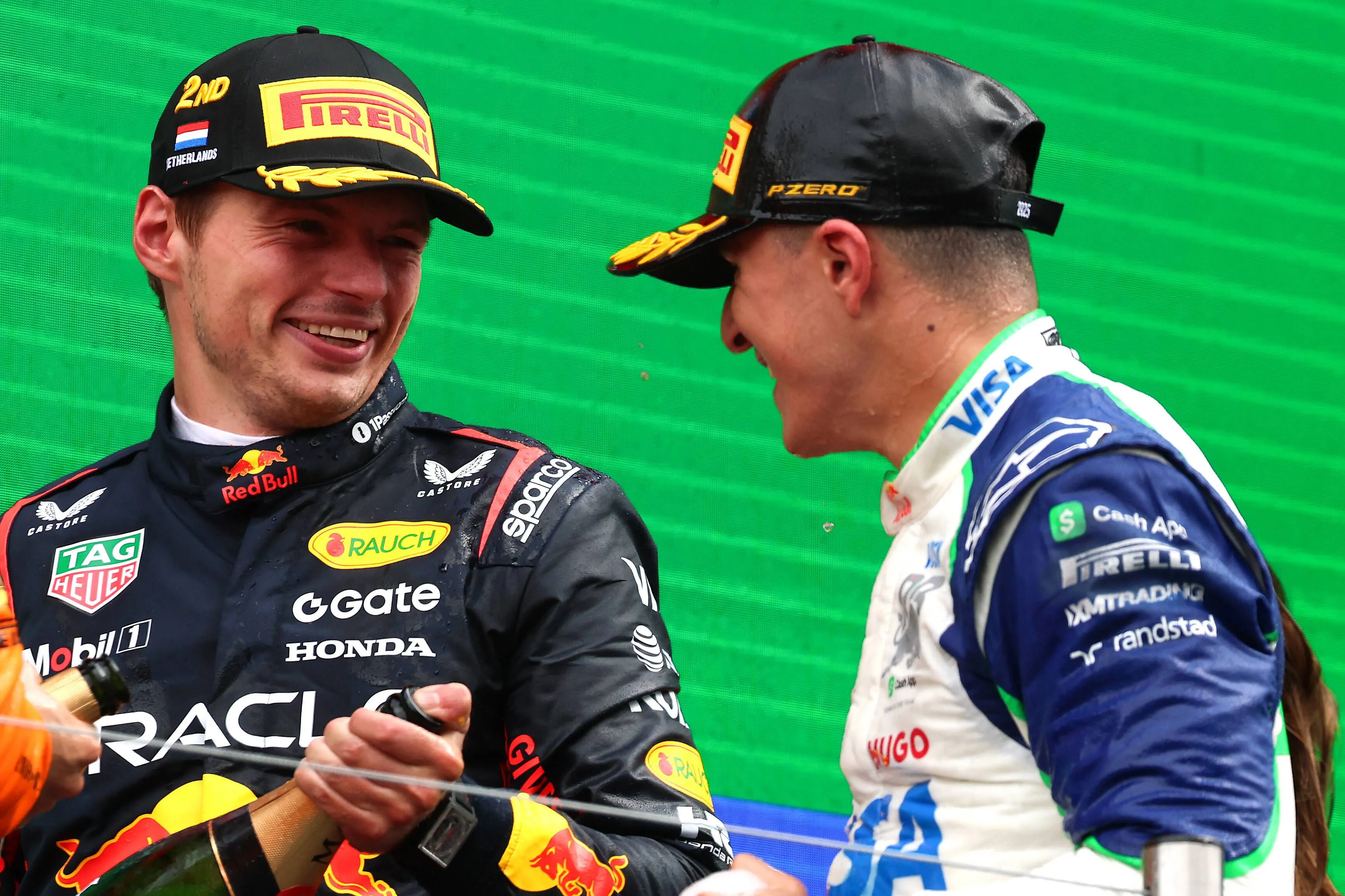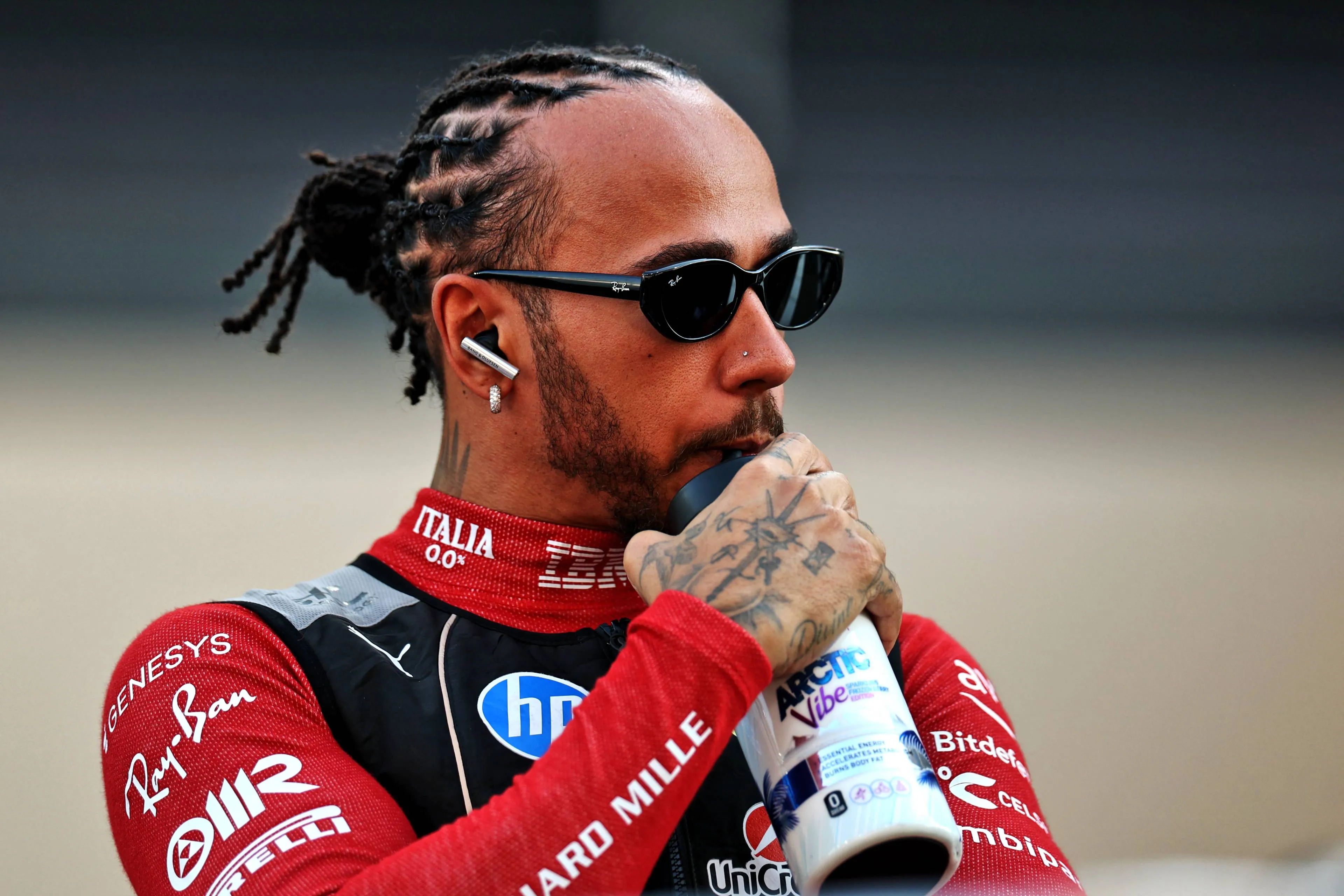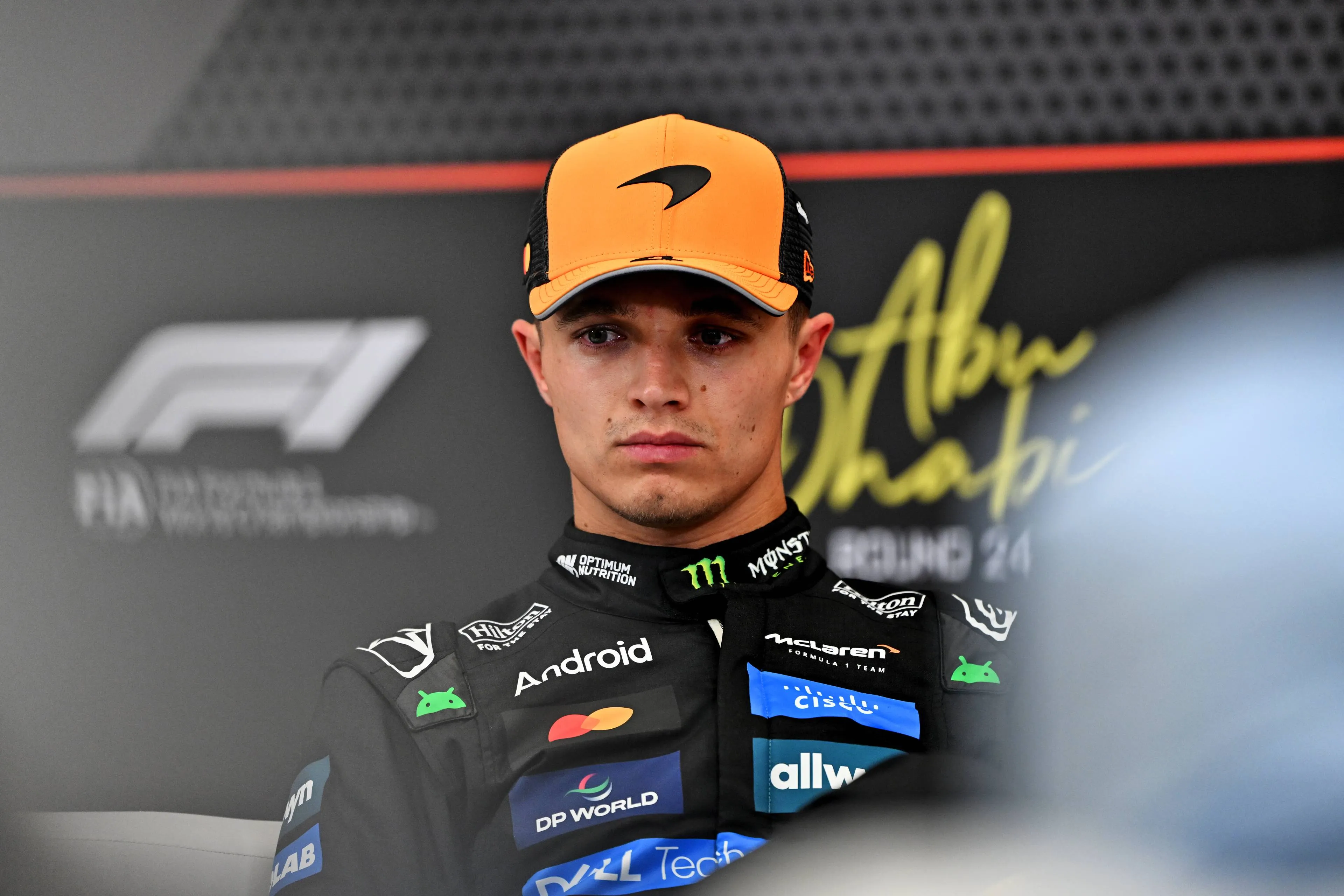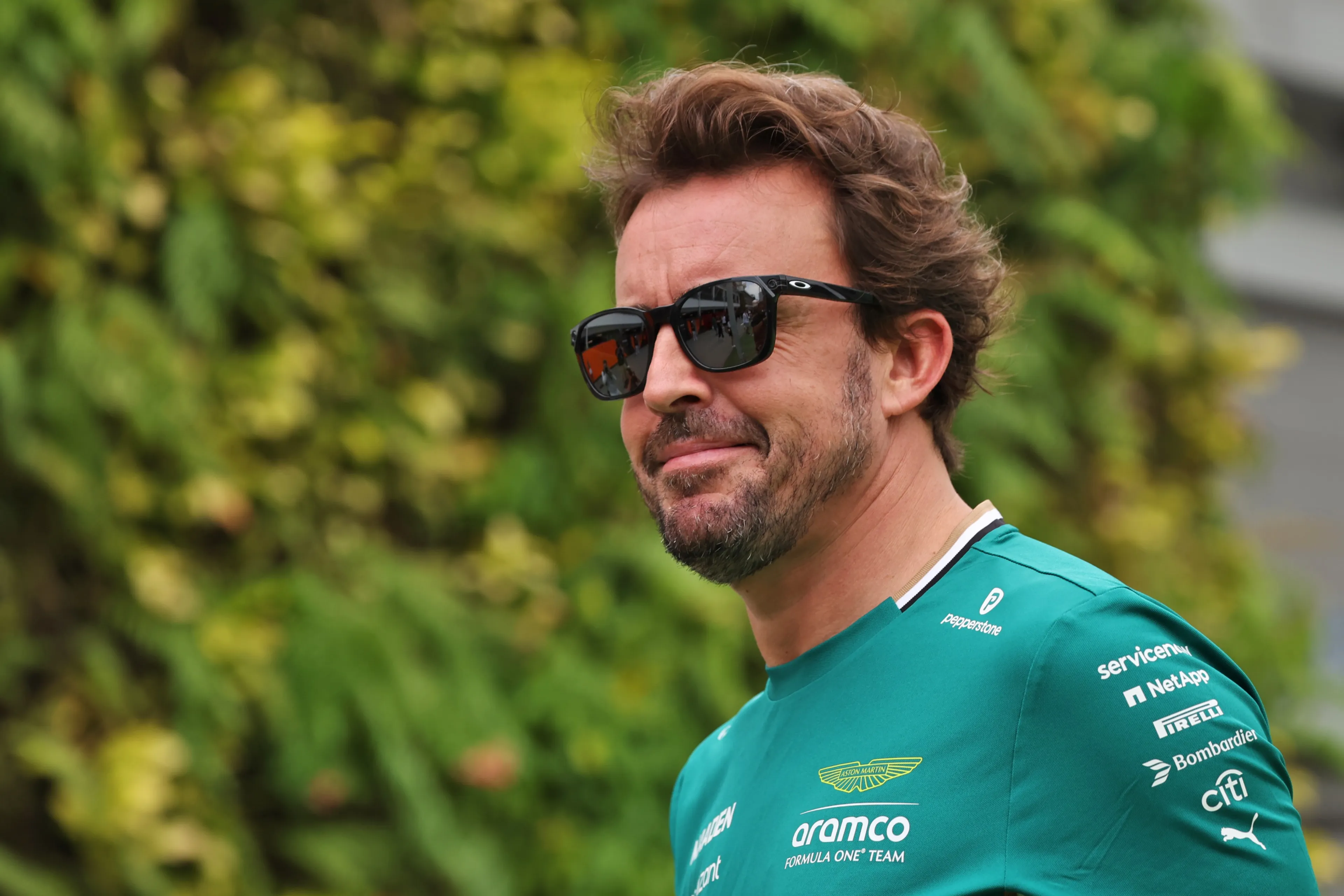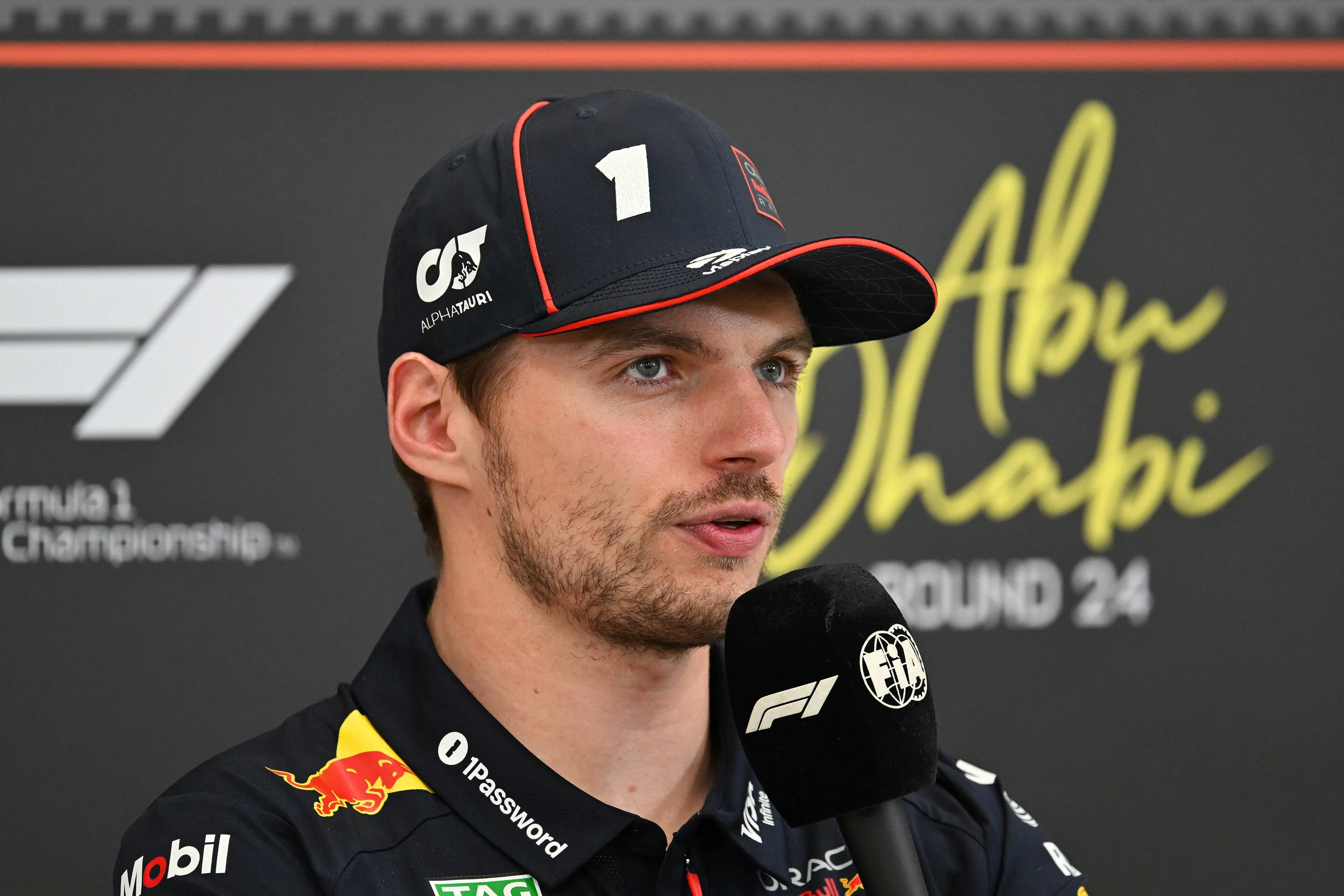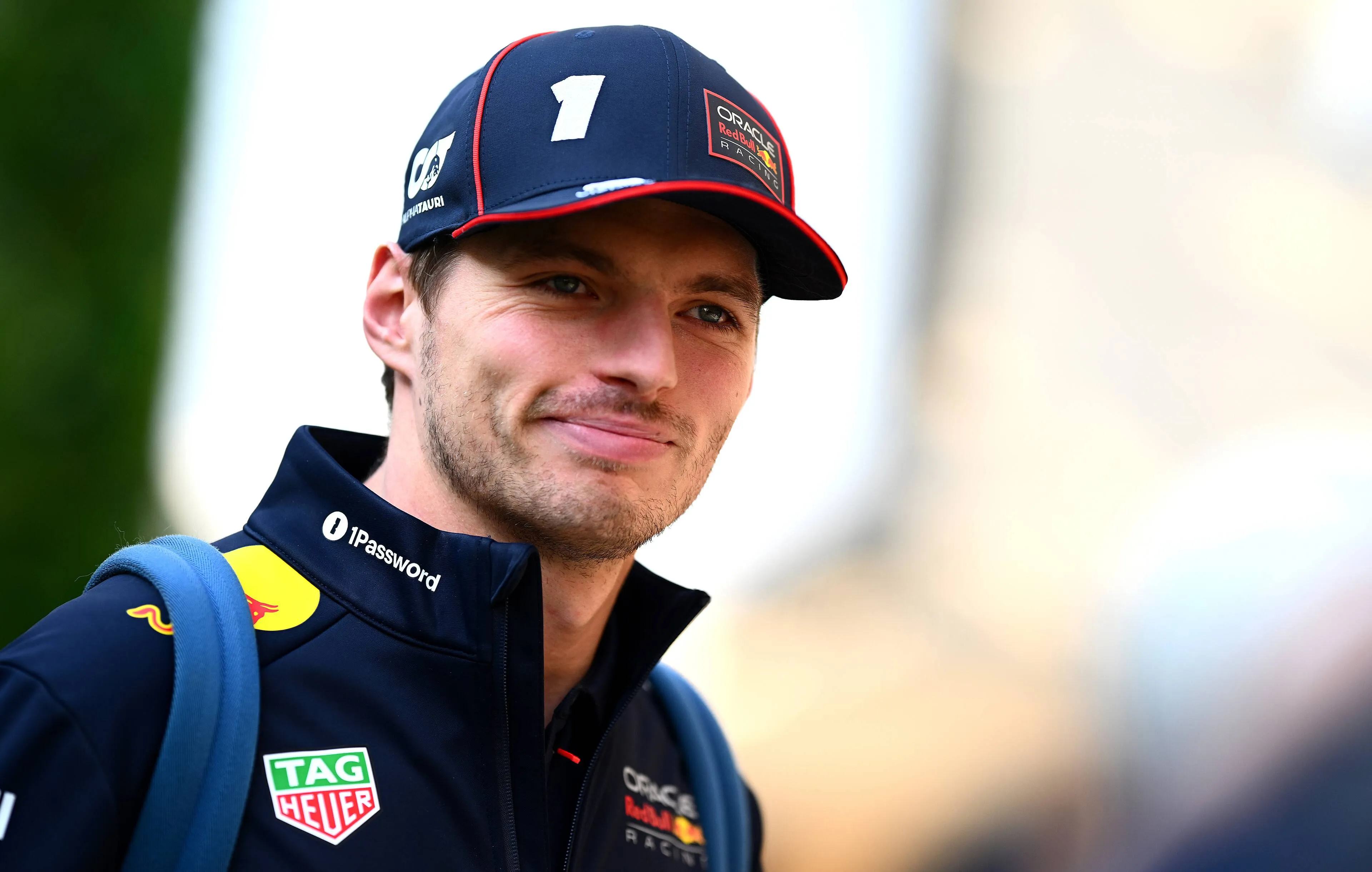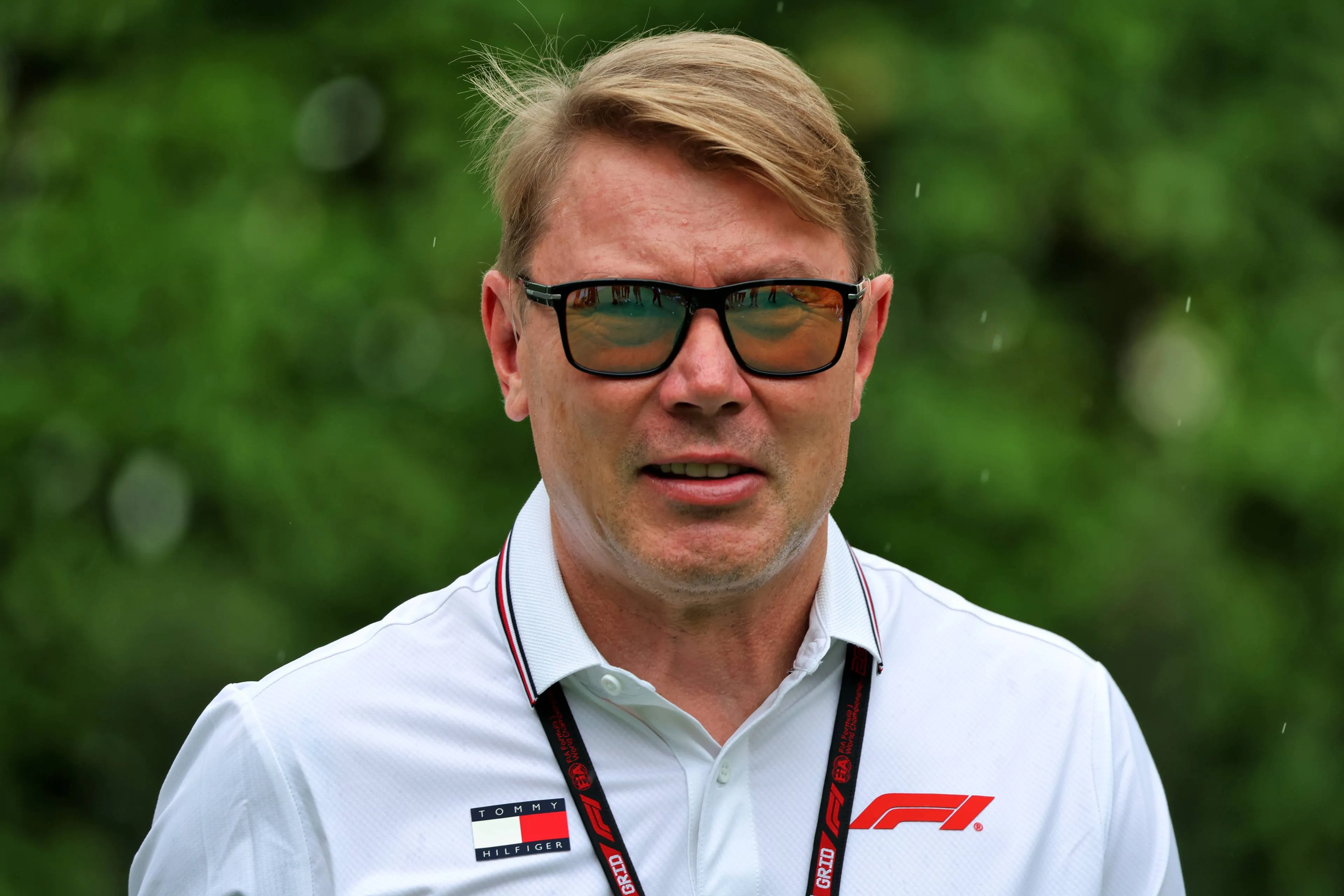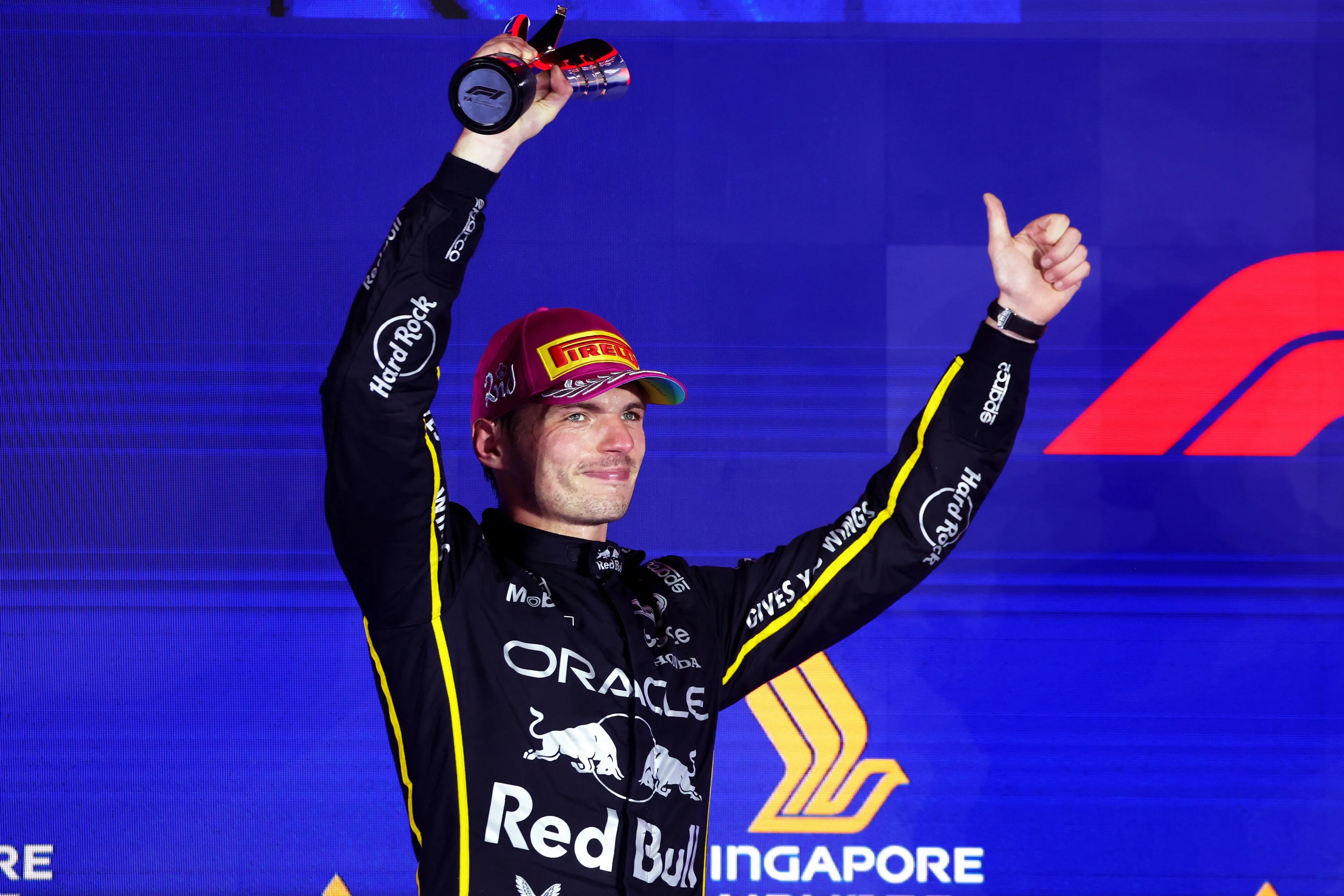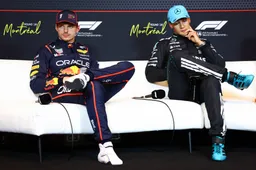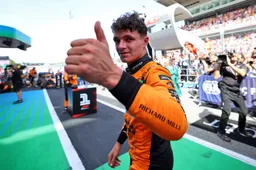Despite a very great start of the season with 7 wins out of 9 races, Montreal was the first proper setback for McLaren, as both drivers struggled a lot during the weekend and failed to get on the podium on Sunday. Norris’ crash was the icing on the cake of a lacklustre weekend, but it shouldn’t come as a surprise. Let’s see why.
After absolutely dominating the Spanish Grand Prix a couple of weeks ago, McLaren arrived in Montreal knowing that the Gilles Villeneuve Circuit wasn’t the best for the MCL39. The stop-and-go nature of the track, together with the very slippery tarmac were the biggest enemies for the Papaya car, preventing it from exploiting its strengths.
New components to be tested in Canada
For the Canadian Grand Prix, McLaren decided to bring some new components to improve the performance of the car. The new parts included a revised front wing, new front suspension fairings and a new medium downforce rear wing.
Starting from the front wing, the connection of the flaps to the endplate has been redesigned: in the version used in Spain, the flaps connected to the endplate by 3 pointed vortex generators, useful for pushing the air outside the front wheel and maximising the outwash effect.
The new version featured additional "mermaid's tail" shaped vortex generators, to accentuate even more the outwash phenomenon, improving the management of turbulence around the front tyre.
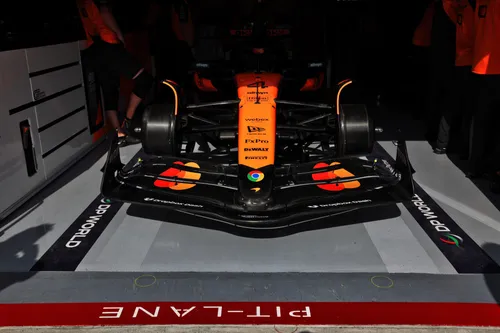
McLaren's old front wing spec
As for the suspension fairings, they have been changed to work better with the new front wing, improving the efficiency of the flow towards the MCL39 bodywork.
Last but not least, a new rear wing appeared on Piastri's McLaren during FP1: the new medium-load rear wing was designed specifically to fit the Montreal layout and was characterised by the typical “V-shape” design that aims at producing a lot of downforce in the central portion of the main plane, while the connection to the endplate was much more unloaded to reduce drag.
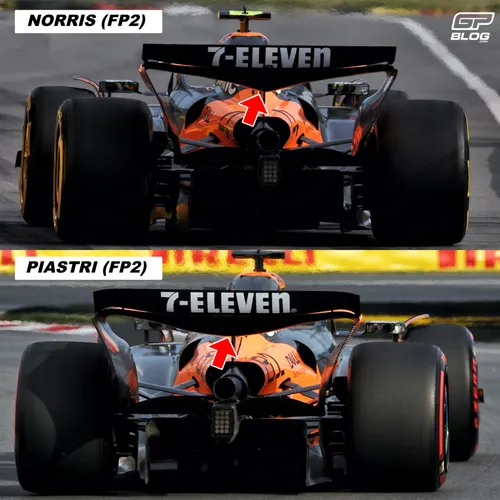
Rear wing comparison between Piastri and Norris in FP2
The new package was fitted only on Piastri’s car for FP1, while Norris kept using the older spec, which included the old front wing version and rear wing as well. For FP2 the two drivers swap their packages, with Norris running the new one and Piastri the older one.
Despite the new components, none of the two drivers seemed particularly comfortable in the car, struggling a lot in the slow speed sections and in traction, as the car was producing a lot of understeering mid corner and oversteering at the exit.
The difficulties in driving also extended to FP2, where the qualifying simulation was still very complicated for both drivers, while their MCL39 looked much more balanced as soon as fuel was loaded for race pace simulations, setting competitive lap times in line with Russell’s and Verstappen’s.
The pace didn’t improve during FP3 either, even tough qualifying was better for Piastri who ended up in P3, with Norris 7th due to many mistakes made during his two flying laps in Q3.
The race saw, however, a very competitive McLaren: despite the struggles over the single lap, Norris was the quickest on the hard tyre during the first stint and Piastri also managed to stay very close to the leading group after being passed by Antonelli on the opening lap.
This aspect was still proof of the MCL39 great ability to suit to different layouts and conditions at high fuel, even on a track where neither of its strength could be exploited.
Smooth tarmac and short corners as explanation to McLaren’s struggles
There’s however an explanation to this struggle: the very low grip asphalt of the Canadian Circuit clearly didn’t help, as it din’t put enough energy into the tyres to make them heat up correctly and consequently drivers were experiencing graining on the front axle.
Another aspect is related to the kind of corners: Montreal is a stop-and-go circuit, meaning that long straights are followed by short slow speed corners and chicanes, possibly were drivers need to use lot of kerbs.
These two factors combined deprived the MCL39 from any of its strengths: as seen during the first half of this season, the MCL39 is very competitive in long slow speed sections, like turn 12 at Barcelona or turn 14 in Bahrain. In Canada, there are no such long corners, but are all corners where drivers brake, turn in and accelerate to exit the corner, spending very little time leaning in the corner.

Norris during a lap in FP2
This aspect, together with the very smooth asphalt, inevitably generates graining, which appears when the core of the tyre is cold and the outer surface is hot. This makes the rubber to disintegrate as a minimum of turning angle is applied.
After all this details, it’s no surprise that McLaren wasn’t comfortable in Montreal and struggled mainly from graining on the front axle in the race, despite the 50°C asphalt, as the level of energy the asphalt put into the tyres was incredibly low.
Norris himself, in fact, pointed at the low grip as one of the factors that slowed McLaren down after qualifying: “It's just very low grip. I think first of all is one of the bigger things and therefore the car balance just never comes together as much as what it does on other tracks.”
Read also
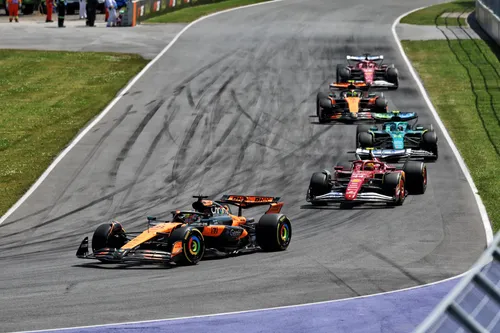
Norris followed by Leclerc during the first stint of the race
Thus, the weekend in Montreal exposed one of McLaren’s weaknesses, even tough is not something completely new: in Las Vegas 2024, the very cold conditions faced, together with the super smooth tarmac and the stop-and-go nature of the track made McLaren have one of the worts weekends of 2024.
If we look closely, that’s exactly what also happened in Canada: the very smooth tarmac and short corners (which didn’t generate enough energy into the tyres to heat them) made McLaren struggle.

MCL38 in Las Vegas in 2024
That’s however one big difference between the two weekends: in Las Vegas, Norris and Piastri finished 6th and 7th respectively, almost 45 seconds behind George Russell in the lead. In Canada, before Norris’ accident, they were within 5 seconds of Russell in P1 and were fighting with Antonelli for the podium.
That’s the proof that, even on a difficult weekend and in difficult conditions, McLaren have done a massive step forward in terms of race pace management and versatility of the car on high fuel load.
Read also
Read more about:
Popular on GPBlog

1
Ex-driver names one circuit he would axe from F1: ‘It's completely soulless’
2298 times read
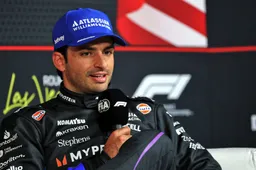
2
Sainz tipped as Alonso’s successor in potential Aston Martin move
788 times read
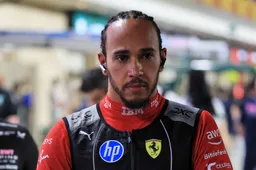
3
Hamilton gets backing of F1 icon after challenging Ferrari season
641 times read

4
Sky Sports pundit snubs Verstappen and Norris as best drivers of 2025
631 times read
Loading
